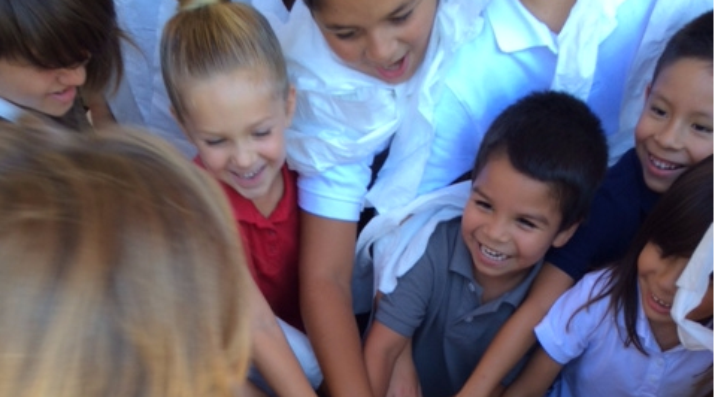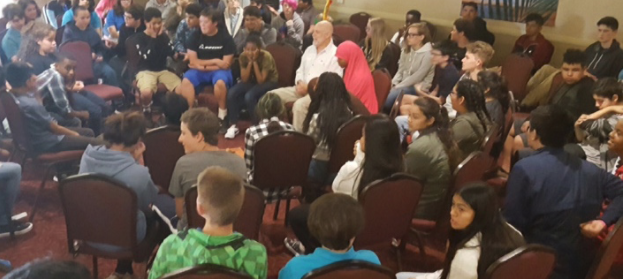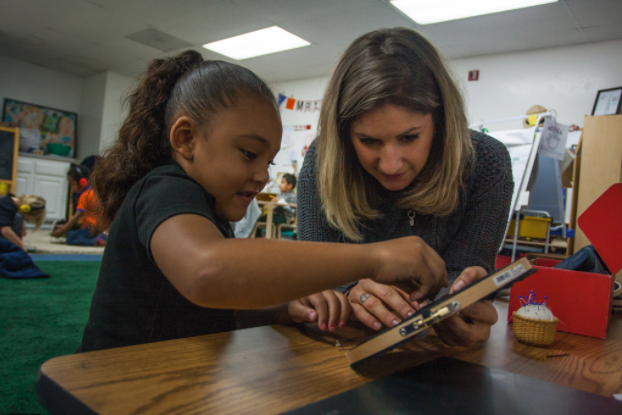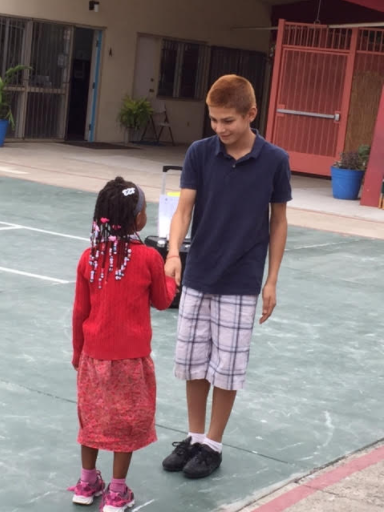New Designs for School
Crafting a Community of Belonging in a Culture of Digital Connection
Topics

We’ve all had the experience of truly purposeful, authentic learning and know how valuable it is. Educators are taking the best of what we know about learning, student support, effective instruction, and interpersonal skill-building to completely reimagine schools so that students experience that kind of purposeful learning all day, every day.
This post originally appeared on Next Gen Learning in Action on Education Week.
In an instant, a student can broadcast 140 characters around the world. She can post a message with a hashtag that reaches thousands of followers and is searchable by millions more. In our world today, words are everywhere. But as words gain reach, they can lose their power. As educators, we have to learn to leverage the power of language to turn our diverse and digitally-connected student bodies into meaningful communities of belonging.
At Thrive, we are reclaiming the power of words through Council, the practice of sitting in community with each other, telling and listening to stories. We know that as a blended learning school, where kids use online pen pal programs to connect with the world and access their daily math lesson with the click of a finger, we must be intentional about moving from connection to belonging. We do this by ensuring every student participates in Council, by building caring relationships with our students, by emphasizing the power of language, and by integrating collaborative work into our curriculum. With these practices, we cultivate a true community of belonging.

1. Every student participates in Council
I witnessed the power of person-to-person connection through language and stories at Council training at Thrive's newest campus last month. We started with games and play, then built up to a quieter circle that demanded more vulnerability from us, and rewarded us with deep connections. Council draws on ancient practices from indigenous American civilizations. Today, versions of Council are used in schools, in the justice system, and anywhere that people seek transformation through meaningful interactions.
In a school setting, Council is about paying close, thoughtful attention to each other. This can happen through silent movements or a laughter-filled activity, but it most often happens with students and other participants sitting in a circle with a centerpiece. Participants select a talking piece to pass around the circle, and only the person holding the talking piece speaks. Everyone else's task is to listen.
It doesn't look like a typical school activity. Some parents and students new to the process certainly report that the experience is "weird." But it offers us a unique way forward to build a culture of belonging at our campuses. After our whole-school Council at the end of the training, a ninth grader remarked in surprise, "Nobody was really talking. Everybody was really listening and paying attention, hearing what other people had to say."

2. Every student builds caring relationships
A core pillar of our work at Thrive is social-emotional learning. We seek to support our students in "learning to be," and our teachers consider it a critical part of every day and every interaction to make students feel valued and heard. Our collaborative discipline approach (linked to non-violent communication) ensures that every student has the means to express their needs and advocate for themselves and others.
Our ongoing focus on relationship building supports the peer-to-peer connections that happen in a structure like Council. "We are already having some of these conversations and fostering these relationships," upper school teacher Maureen Moran observes. But Council "gets kids accustomed to, over time, being vulnerable and sharing what's going well and what isn't and what questions and concerns you have with a group rather than just this one person. Knowing that you have the support of the group is different than having the support of your teacher or your boss."

3. Every student understands the power of language
In and out of class, we work with our students to build their speaking skills and support them in recognizing the impact of their words. In quarterly student-led conferences, students prepare to speak to a real-world audience that matters to them—their parents and teachers. As a result, they craft their words carefully and demonstrate enormous growth in their ability to use language to express themselves over the course of the year. Our students also participate in project showcases and presentations that require them to select language thoughtfully and then reflect on their choices.

4. Every student engages in collaborative work
Thrive's community is intentionally diverse, and our students represent a wealth of experiences and backgrounds, coming to us from 37 different zip codes and 135 different feeder schools. Children experiencing generational poverty sit next to the children of scientists and educators. We ask our students to work together every day to solve problems and create beautiful work. Students recognize the value of these collaborative projects. Working together builds connection and understanding in a way that complements the social-emotional work of Council and other relationship building.

A community of belonging
There's extraordinary potential in a culture built by students who are sitting down and truly listening to each other on a weekly basis, who are demonstrating to each other over and over again that they can be vulnerable and place trust in each other. Students who can listen can build empathy, can resolve conflicts, can build strong relationships. Students who can trust each other build a culture of rich physical and emotional safety that allows everyone to focus on learning and growing.
Of course, it isn't only students who benefit from this experience. You may be digitally connected to me right now, reading my words across the country or across the world from San Diego, but we may only truly connect when we sit in Council with each other. In the words of a Thrive ninth grader, "If we have Council, we get to hear each other and learn about each other more." We hope you come to visit Thrive and connect with us and our students.
Photos by Thrive Public Schools.




